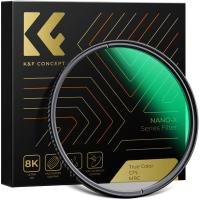Can Drones See Inside Your House?
The advent of drone technology has brought about significant advancements in various fields, from aerial photography to delivery services. However, it has also raised concerns about privacy and security. One of the most pressing questions people have is whether drones can see inside their homes. This article aims to address this concern by exploring the capabilities of drones, the technology they use, and the legal and ethical implications of their use.
Understanding Drone Capabilities

To determine whether drones can see inside your house, it's essential to understand the technology they employ. Drones are equipped with various sensors and cameras, each with different capabilities:
1. Standard Cameras: Most consumer drones come with high-resolution cameras capable of capturing detailed images and videos. These cameras are excellent for outdoor photography but have limitations when it comes to seeing through walls or windows.
2. Thermal Imaging Cameras: Some drones are equipped with thermal imaging cameras that detect heat signatures. These cameras can see through certain materials, such as thin walls or glass, but they primarily detect heat rather than detailed images.
3. LiDAR (Light Detection and Ranging): LiDAR technology uses laser pulses to create detailed 3D maps of the environment. While it can penetrate some materials, it is generally used for mapping and surveying rather than spying.
4. X-Ray Technology: Although not commonly used in consumer drones, X-ray technology can see through walls. However, this technology is highly regulated and primarily used in medical and industrial applications.
Practical Limitations
While the technology exists for drones to see through certain materials, several practical limitations make it unlikely for drones to see inside your house:
1. Distance and Angle: For a drone to see inside your house, it would need to be very close to your windows and at the right angle. Most consumer drones are not designed for such close-range surveillance.
2. Obstructions: Walls, curtains, and other obstructions significantly limit a drone's ability to see inside. Even thermal imaging cameras struggle to provide detailed images through thick walls or multiple layers of material.
3. Battery Life: Drones have limited battery life, typically ranging from 20 to 30 minutes. This limitation makes prolonged surveillance challenging.
Legal and Ethical Considerations
Even if a drone has the capability to see inside your house, there are legal and ethical considerations that act as deterrents:
1. Privacy Laws: Many countries have strict privacy laws that prohibit unauthorized surveillance. In the United States, for example, the Fourth Amendment protects citizens from unreasonable searches and seizures, which extends to drone surveillance.
2. Regulations: The Federal Aviation Administration (FAA) and other regulatory bodies have guidelines and restrictions on drone usage. These regulations often include no-fly zones and altitude limits that make it difficult for drones to conduct invasive surveillance.
3. Ethical Concerns: Ethical considerations also play a significant role. Most drone operators are hobbyists or professionals who adhere to a code of conduct that respects privacy. The misuse of drones for spying is generally frowned upon and can lead to legal repercussions.
How to Protect Your Privacy
While the likelihood of a drone seeing inside your house is low, there are steps you can take to protect your privacy:
1. Window Treatments: Use curtains, blinds, or frosted glass to obstruct the view from outside. These treatments can effectively block both standard and thermal imaging cameras.
2. Surveillance Detection: Invest in surveillance detection technology that can alert you to the presence of drones near your property. These devices can detect the radio frequencies used by drones and notify you of their presence.
3. Legal Action: If you suspect that a drone is invading your privacy, you can take legal action. Document the incident and report it to local authorities. In many jurisdictions, there are legal avenues to address unauthorized surveillance.
The question of whether drones can see inside your house is complex and multifaceted. While the technology exists for drones to see through certain materials, practical limitations and legal restrictions make it unlikely. Understanding the capabilities and limitations of drone technology can help alleviate privacy concerns. By taking proactive measures, such as using window treatments and surveillance detection, you can further protect your privacy.
In summary, while the fear of drones invading your privacy is not entirely unfounded, the reality is that the likelihood is low. Legal and ethical considerations, combined with practical limitations, act as significant deterrents. By staying informed and taking appropriate precautions, you can enjoy the benefits of drone technology without compromising your privacy.













